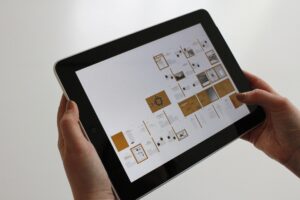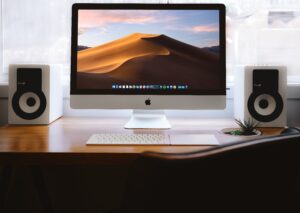A couple of years ago, your teens would have nagged you for a cellphone for Christmas. This year, it’s tablets. Tablets are great for both entertainment and education. There is a huge range of tablets on the market, and it’s worth shopping around to find the one that best suits your child’s age and needs – and your wallet. Here are some pointers to consider.
Safety first
Kids love to search the internet, and even a toddler will manage to use a tablet in ways you didn’t know were possible. This means your children may also be at risk from online predators and adult content.
Special tablets for kids, like the LeapPad, have been tinkered with to be family-friendly, with their educator-approved apps and kid-safe web-browsing. But the more “adult” tablets have none of these restrictions: parents must set them themselves. There’s a range of parental control software and apps you can download, such as the Vodafone Guardian app. These provide various levels of restriction and options for internet use, many of them password-protected.
For more info on how to keep your kids safe online, read our story here.
Insurance
Even a modestly priced tablet is an investment and needs to be covered by some sort of insurance. If you add your child’s tablet to your household insurance, it will have to be for all risks, which will cover the tablet for theft, damage and/or loss both inside and outside the home. The additional premium will range from about R50 to R80, depending on the make and value. You can also insure a tablet individually, but it can be expensive: anything from about R70 to R200 per month, depending on the make and value.
Vodacom offers device insurance for portable devices – take a look here for more.
Data
It’s also important to think about what data option you want for your child. If you opt for a Wi-Fi-only tablet, your child will be able to connect at school and at home through Wi-Fi networks – but nowhere else. It’s worth considering a data contract if you don’t have Wi-Fi at home and want to make sure your child can stay connected.
However, be warned that while tablets are perfect for watching movies and videos, this chews through data – watching high-definition videos can easily gobble up 1GB in a matter of hours. Educate your child about how much data this uses. Educate your child about the costs. If you opt for a data contract through Vodacom, you can ask the sales agent to send data usage notifications to your cellphone number to make sure that your child doesn’t exceed his or her data limit.
Accessories
When it comes to tablet accessories, you’re limited only by your budget. But for kids and teens, a sturdy cover and/or carry-case is a must-have. Depending on quality, these can range from R100 for a gel skin for the LeapPad, through around R500 for a carry-case, to anything up to R1 000 for a protective cover. Your kids will appreciate headphones (you can get a reasonable pair for around R200) – but, more importantly, so will you!
Educational resources
If you’re cringing at the cost of a tablet for your teen, you can comfort yourself with the knowledge that it really is a great educational tool. Here are just a few of the thousands of resources available online.
- SABC Education delivers, according to its website, “compelling educational content for diverse audiences in South Africa and the rest of Africa”: http://www.sabceducation.com/
- Department of Basic Education learner support: http://www.education.gov.za/dobeinternet/learners/tabid/271/Default.aspx
- Useful reviews of movies, books, apps and games: http://www.commonsensemedia.org/reviews
- BBC History for Kids (including Africa): http://www.bbc.co.uk/history/forkids/
- Home schooling info for South Africans: http://homeschoolinfo.co.za/resources.html
What tablet to get?
For the little ones (ages 4-10)
Leapfrog’s LeapPad (R1 500-R2 000) looks like exactly what it is: a tablet for kids. This sturdy little machine has Wi-Fi capability, a 7-inch screen, two cameras, a rechargeable battery and an 8GB internal memory, and offers child-safe internet browsing through specially selected websites. It’s compatible with more than 800 educator-approved games, ebooks, apps and videos which can be downloaded by parents or bought on cartridges. The software is quite expensive but it has been created by educational experts.
For the teens (ages 11 and up)
While the Amazon Kindle Fire HD (about R3 200) isn’t a kids’ tablet per se, its price and built-in parental controls make it a good option for the budget conscious. It has Wi-Fi capability and a 7-inch screen but doesn’t have a camera. Amazon’s media store offers a great selection of books, movies, TV shows and music.
Mid-range tablets such as the Lenovo A1000 or A3000 (about R1 500-R2 500) offer the basics of what is needed: a 7-inch screen, Wi-Fi connectivity and a camera.
The best you can get
There’s no getting away from it: if you can afford it, Apple’s iPad (upwards of R3 600) is the daddy of all tablets. There are millions of apps available through the Apple App store, many of which offer both family fun and educational benefits. The smaller, more compact iPad mini would fit a child’s hands better.
Samsung’s range of tablets, such as the Galaxy Note 3, which has a built-in stylus, and the Samsung Galaxy Tab 3 are also excellent tablet options, as is the premium Sony Xperia Z, which is waterproof too. Tablets running the Android operating system open up a world of apps through Google’s Play Store. Google’s free suite of services including Google Drive and Google Calendar are a drawcard too.



